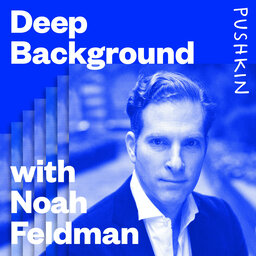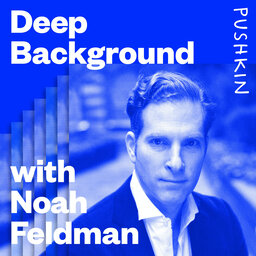The Road out of the Pandemic
Marc Lipsitch, a professor of epidemiology at Harvard's T.H. Chan School of Public Health, comes back to Deep Background to discuss where we are now in the fight against COVID-19.
Clarification: There are two studies that suggest a decline in the risk of dying among hospitalized or ICU COVID-19 patients. Here is a link to those studies: https://www.npr.org/sections/health-shots/2020/10/20/925441975/studies-point-to-big-drop-in-covid-19-death-rates. Marc Lipsitch also mentions unpublished data that he has seen from Florida that suggests no such decline.
Learn more about your ad-choices at https://www.iheartpodcastnetwork.com
 Deep Background with Noah Feldman
Deep Background with Noah Feldman


